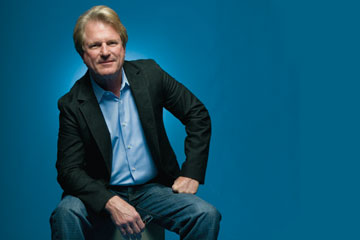*Photo via utexas.edu
Last week, I attended a luncheon where the keynote was given by Roy Spence, founder of the advertising firm GSD&M Idea City. All of us who live and work in creative fields – be it advertising, marketing, or design – have experienced those moments in which we find ourselves in need of inspiration to continue along the path we have chosen.
Mr. Spence’s talk provided such inspiration. It wasn’t simply his focus on the big picture…”the why” of what we do, but he reminded those of us in attendance to remember to focus on the basics. For marketers, Mr. Spence pointed out, we simply need to drill down to four questions:
Where are we? Where do we want to be? How do we get there? And, are we getting there?
Simple enough, to be sure. But, so very easy to forget in the flurry of life in business.
The video below was recorded in 2010, but is very similar to Mr. Spence’s talk this past week. There’s a bit of swearing, playful sarcasm, and a gem or two of wisdom. Enjoy!
*cf









